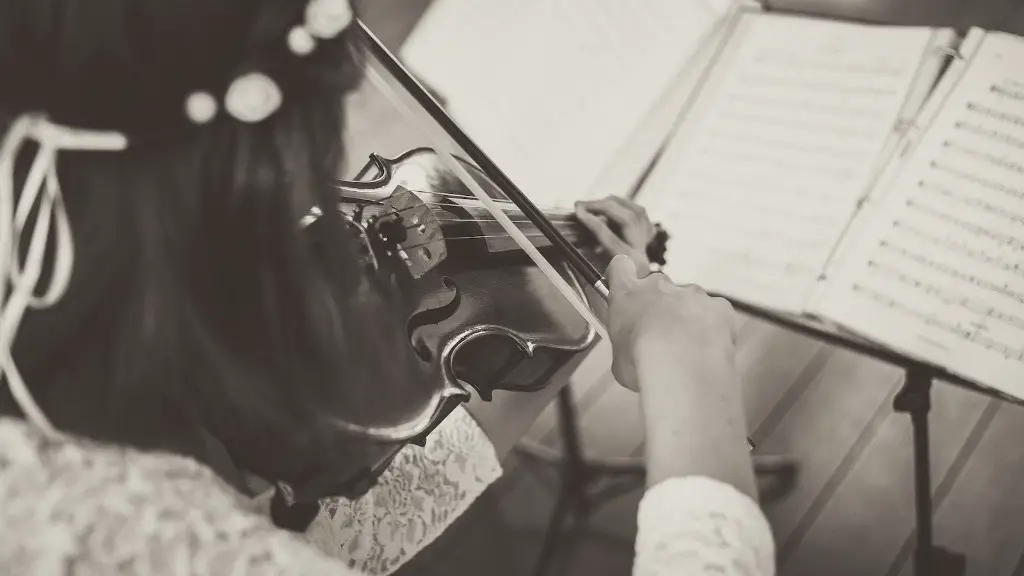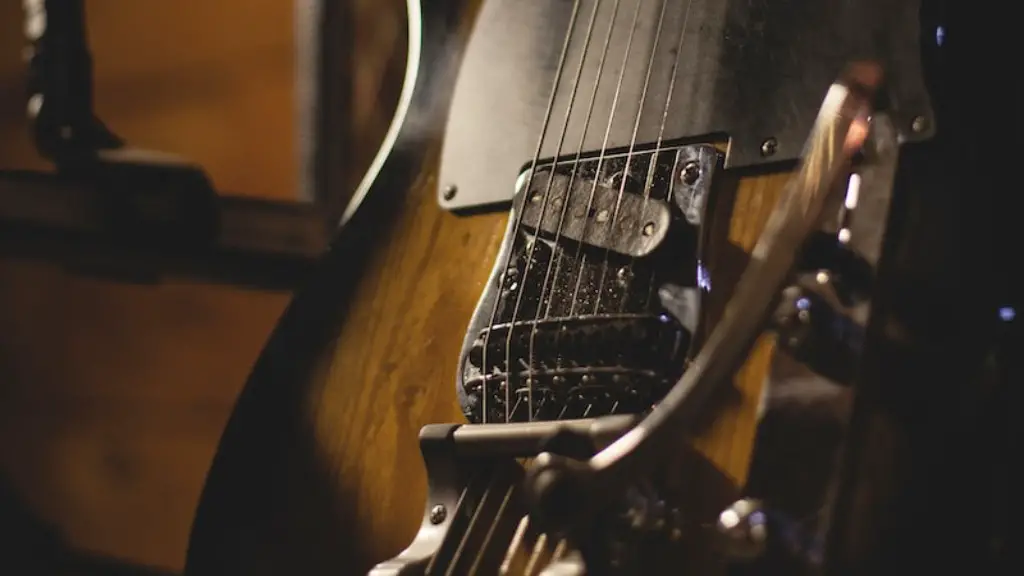Becoming a violin maker is a difficult and rewarding path, but it is possible with the right knowledge and skill. This guide will provide you with the necessary steps to become a skilled violin maker.
The first step to becoming a violin maker is to gain an understanding of the craft. You should research different methods of building violins, such as materials needed, the tools required, and the techniques used. You can find this information online or in books about violin making. It is also important to learn music theory and basic woodworking skills.
The next step is to find an apprenticeship or training program where you can gain hands-on experience in building violins. During your apprenticeship, you will learn valuable skills such as proper tool use, woodworking techniques, and how to shape and size components for violins.
Finally, once you have gained enough experience and knowledge of violin making, it is time to start building your own instruments. You may want to collaborate with other experienced makers or join a workshop where you can practice using different tools and materials on actual instruments. With hard work and dedication, you will be able to create beautiful instruments that sound great!
Materials Used in Violin Making
Violin making requires a variety of materials for construction. The most important materials used in violin making include wood, glue, varnish, strings, and fittings. Wood is generally the main material used for the body of the violin, while glue and varnish are used to secure and protect the wood. Strings provide the instrument with its unique sound and are typically made from steel or gut. Fittings such as pegs and tailpieces are often made from ebony or boxwood and are usually affixed to the instrument with glue. The quality of materials used in violin making will have a major impact on the sound quality of the instrument.
In addition to these basic materials, tools like saws, planes, chisels, scrapers, files, and gouges are essential for any aspiring violin maker. Along with these tools come various types of clamps to hold pieces together while they’re being worked on. It’s also important to have access to sharpening stones so that tools stay in good condition over time. Having a good understanding of woodworking techniques is also critical when it comes to making violins.
How to Become a Violin Maker
Are you passionate about music and interested in learning how to craft beautiful violins? Becoming a violin maker is an invaluable skill that takes time and dedication. The best way to learn the craft is through an apprenticeship or mentorship. This can provide access to the knowledge, tools, and techniques of experienced professionals in the field.
Start your search by researching local luthiers who may be offering apprenticeships or mentorship programs. You can also look into nearby music schools and universities that may offer classes in violin making. Additionally, there are organizations such as the American Federation of Violin & Bow Makers which offer training courses and workshops for aspiring makers.
Before committing to an apprenticeship or mentorship program, make sure you thoroughly review the details and understand what is expected from both parties. You will need to be prepared for long hours spent perfecting your craft, as well as have the discipline needed for success. Once you have found a mentor or program that fits your needs, dedicate yourself fully to learning all you can about crafting violins!
With enough patience, practice, and hard work, you can become a skilled violin maker who can create beautiful instruments with great sound quality. Keep in mind that it is important to stay up-to-date on new developments in the field so you can continue creating high-quality violins. With determination and dedication, becoming a skilled violin maker is within reach!
Obtain Certification or Education in Violin Making
Becoming a violin maker is not an easy task. It requires technical knowledge, skill, and experience. To become a professional violin maker, it is necessary to have an educational background in the craft. There are many educational programs available that offer certification and training in violin making. These programs provide instruction on topics such as woodworking, instrument design, building techniques, and repair methods. Additionally, some courses provide hands-on experience with the construction of stringed instruments.
In some cases, it may be beneficial to pursue an apprenticeship with an experienced luthier or craftsman before taking classes or entering into certification programs. This can be a great way to gain firsthand knowledge of the craft and learn from someone who has been working in the field for years. Additionally, many luthiers offer internships or apprenticeships that allow aspiring violin makers to explore their interest in instrument making without having to commit to a formal program of study.
Those interested in becoming a certified violin maker should consider pursuing additional education after completing any program or apprenticeship. This can include attending workshops or conferences related to instrument construction and repair, reading specialized books on the topic, or joining professional organizations such as the American Federation of Violin and Bow Makers (AFVBM). With enough dedication and hard work, anyone can become a qualified violin maker.
Become a Violin Maker
Making a violin is an artistry that requires specialized tools, knowledge, and skill. It takes dedication and practice to become a master luthier. To get started, you’ll need to obtain the necessary tools and materials. You should also familiarize yourself with the different parts of the violin, such as the bridge, sound post, tail piece, fingerboard and strings. Once you have the supplies ready, it’s time to start building your own workshop.
A good workspace should be well-ventilated and have adequate lighting. You will also need plenty of space for work benches and tools as well as enough area to store supplies. It is helpful to set up an area specifically for sanding and varnishing the instrument components in order to keep your workspace neat and organized.
When it comes time to assemble your violin, you must pay close attention to detail. Start by gluing together all of the parts of your instrument’s body – top plate, back plate, ribs etc. Then assemble the neck section before attaching it to the body with dowels or screws.
Once everything has been assembled and glued in place, you can move on to shaping and sanding each component until everything fits together perfectly. After this step is complete you can begin carving out an appropriate bridge shape for your instrument before stringing it up with new strings.
Finally you must tune your violin so that it produces a beautiful sound when played. This process includes adjusting the strings at both ends in order to achieve just intonation or perfect fifths – depending on what type of tuning system you choose to use. With practice and patience you can become a skilled luthier who can make unique violins that will be cherished by musicians everywhere!
Becoming a Violin Maker
Becoming a violin maker requires dedication, patience, and an understanding of traditional tools and techniques. Learning the art of making violins involves mastering the use of hand tools such as saws, chisels, planes, and scrapers. It also requires knowledge of how to use hand-powered lathes and electric grinders to shape components accurately. The development of a good eye for detail and the ability to correctly fit pieces together are essential skills for any aspiring violin maker.
The process of becoming a violin maker begins by studying the design principles behind stringed instruments. This could involve traditional lutherie courses, attending workshops or taking on an apprenticeship with an experienced luthier. Once fundamental skills have been developed it is important to practice whenever possible in order to develop a unique style that sets your work apart from others.
In order to become successful as a violin maker, it is necessary to focus on developing high quality instruments that will stand the test of time. This involves perfecting techniques such as woodworking, varnishing, carving and undercutting, inlay work and sound post adjustment. Attention must also be paid to selecting quality materials such as spruce for tops and maple for backs that will produce excellent sound quality in completed instruments.
Practice and Hone Your Skills Regularly
Becoming a successful violin maker requires a combination of skills, including knowledge of woodworking, understanding the physics of sound, and design. It is important to practice and hone these skills on a regular basis. Aspiring violin makers should take classes in relevant areas such as instrument building, design, acoustics, and woodworking. They should also practice their craft by making violins or other instruments from scratch. It is also useful to develop an understanding of the history behind the craft of violin making in order to better appreciate the artistry involved. Practicing regularly will help aspiring makers become better at their craft and gain recognition for their work.
In addition to honing your skills by practicing regularly, it is important to keep up with the latest advancements in technology related to violin making. This can include using different tools or techniques for constructing or repairing instruments. Reading professional magazines and attending workshops can help keep aspiring makers up-to-date with the latest developments in the field. By staying informed, makers can create better instruments that produce beautiful sounds.
Finally, it is important for aspiring violin makers to network with other professionals in the field who they can learn from and collaborate with. Joining organizations like The Violin Society of America can be beneficial as it provides access to resources such as workshops and events that allow members to share their expertise, as well as connect with other experienced makers who may be able to offer advice or even mentorship opportunities.
Wrap Up
In conclusion, adjusting the shoulder rest on a violin is a straightforward process that can be completed in only a few minutes. First, identify the correct shoulder rest for your instrument and secure it to the body of the violin. Then, adjust the shoulder rest to make sure it is positioned correctly and comfortably for your body shape and size. Finally, you have to make sure that the strings are not too tight or too loose and can be adjusted according to your preference. By following these steps, you can enjoy playing your violin with ease.





